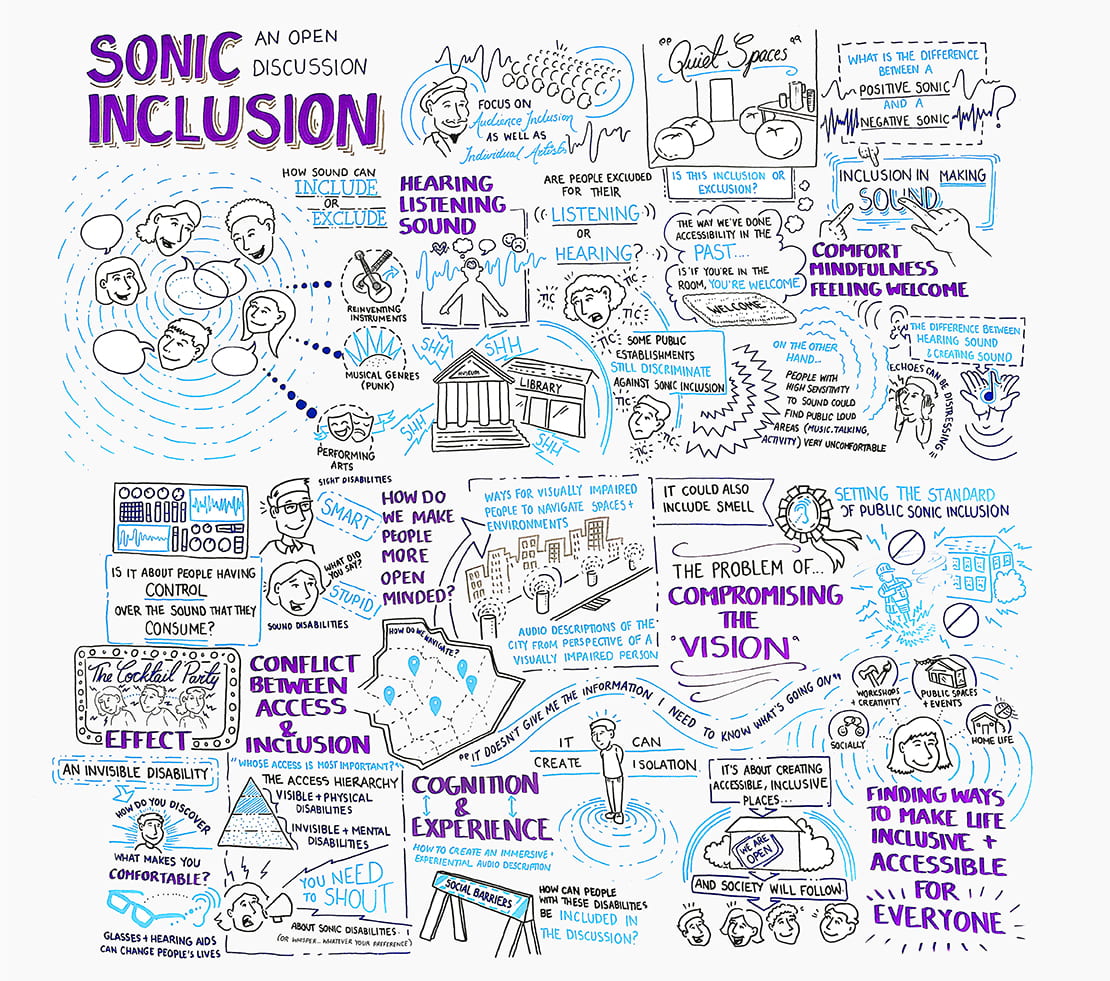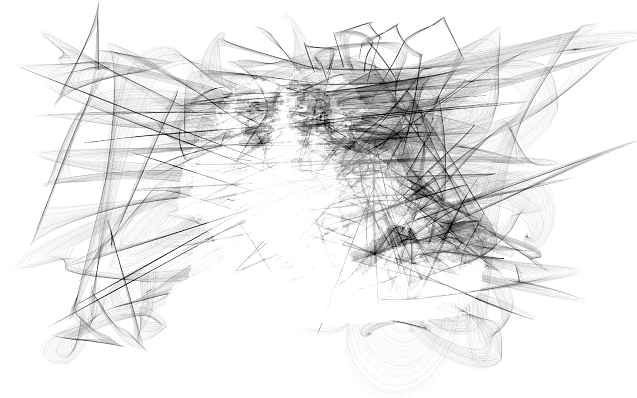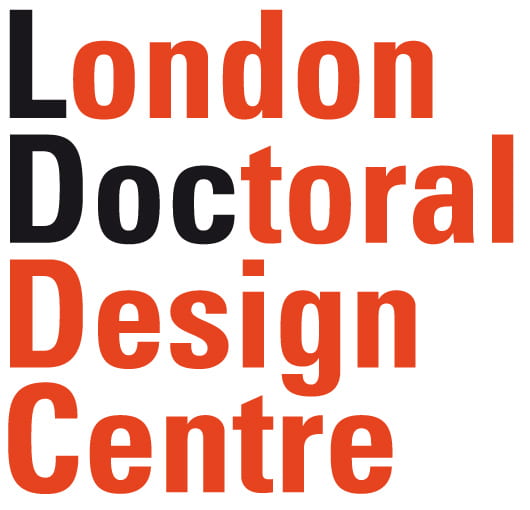
Sonic Inclusion open discussion, live visualisation by Amber Anderson
Sonic Inclusion: charting the sonically inclusive principles of creative urban environments through the ‘auraldiversity’ paradigm
Historically, sound and human hearing have received little attention in the design of urban spaces and places, particularly with regards to the psychological and sociological impacts of hearing on the experience of individuals in the built environment. For many, such as those with sensory sensitivities, those affected by sight or hearing loss, or those with conditions such as Tourettes, Misophonia or Hyperacusis, sound and hearing can dictate whether an environment is socially inclusive or exclusive, accessible or non-accessible. Yet sonic inclusion – the ways in which sound enables people to be included in society – remains under- researched in design and narrowly represented in access legislation.
In viewing this investigation through the social model of disability, sonic exclusion is understood as a societal failure to consider the ‘auraldiversity’ of the population in the ways that environments, structures and systems are designed and developed. The emerging ‘auraldiversity’ paradigm foregrounds the examination and celebration of the diversity of human hearing and affords the opportunity of a sonically equitable and hearing-centred perspective to inclusive design research and practice.
The research situates the historical perspectives of acoustic ecology, aural architecture and sonic ethnography, within the contemporary trajectory of inclusive design practice, defining a new perspective of ‘sonically inclusive design’.

10 Minutes of Nothing – Will Renel & Touretteshero, 2015
Updated: 18th July 2017
